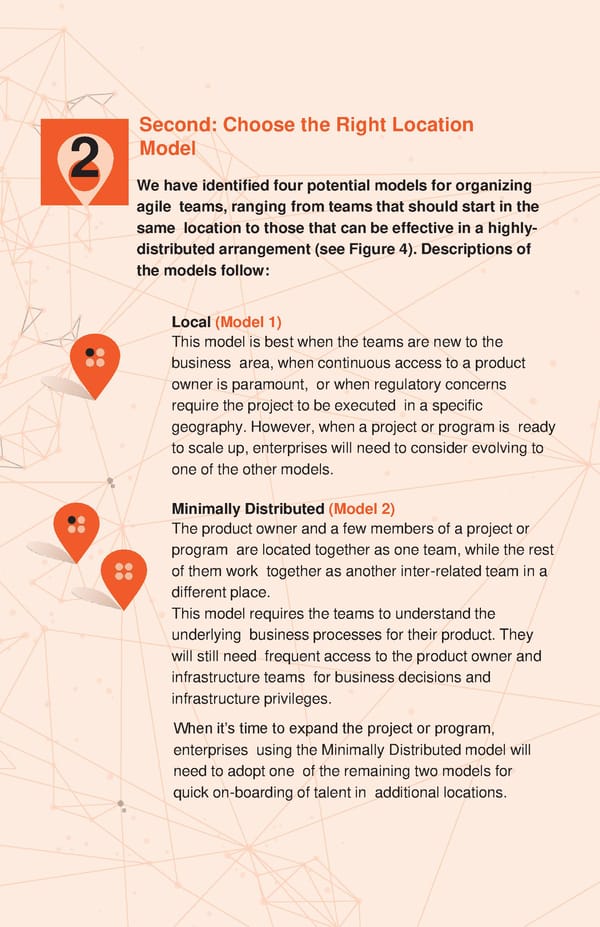Second: Choose the Right Location 2 Model We have identified four potential models for organizing agile teams, ranging from teams that should start in the same location to those that can be effective in a highly- distributed arrangement (see Figure 4). Descriptions of the models follow: Local (Model 1) This model is best when the teams are new to the business area, when continuous access to a product owner is paramount, or when regulatory concerns require the project to be executed in a specific geography. However, when a project or program is ready to scale up, enterprises will need to consider evolving to one of the other models. Minimally Distributed (Model 2) The product owner and a few members of a project or program are located together as one team, while the rest of them work together as another inter-related team in a different place. This model requires the teams to understand the underlying business processes for their product. They will still need frequent access to the product owner and infrastructure teams for business decisions and infrastructure privileges. When it’s time to expand the project or program, enterprises using the Minimally Distributed model will need to adopt one of the remaining two models for quick on-boarding of talent in additional locations.
 Successfully Implementing Location-Independent Agile Teams Page 1 Page 3
Successfully Implementing Location-Independent Agile Teams Page 1 Page 3